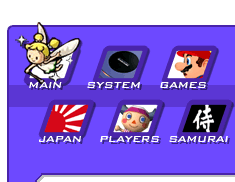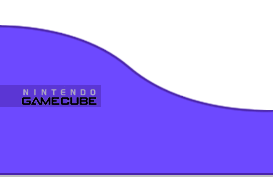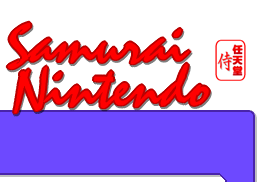Review / Test:
As you all know, The Twin Snakes is a remake of the first "Solid" title in the Metal Gear series which first appeared on Sony Playstation. Before that, Metal Gear had been mostly famous for two great action/adventure games on NES in 1988 and 1990. However, thirteen years later, when Konami announced in 2003 a new Metal Gear title for a Nintendo home console, it didn't make as much noise as Final Fantasy Crystal Chronicles and the so-called "Return of Square". Ironically though, The Twin Snakes plays much more like a Metal Gear game than Crystal Chronicles plays like a Final Fantasy game, not only that, it's also better.
The Twin Snakes doesn't feature any major change to its Playstation counterpart unlike Capcom's Resident Evil which is so much like a different game on GameCube. That's why this remake was bound to attract mostly two groups of people: those who never played the original game, and hardcore fans; these two wouldn't necessarily make a crowd. One interesting aspect of The Twin Snakes though, was the joint-venture between Konami, Nintendo and Silicon Knights. The latter one being the developer of what was to become its second title for the GameCube and, unknown at the time, its last exclusive title for Nintendo.
It's maybe in the graphics department that you can feel the most Silicon Knight's touch, probably because everything was enhanced from the original version and, even though it could have been better, the graphics are well crafted. At least most of it. Backgrounds and objets are fine, they help to build the appropriate, greyish atmosphere; characters, on the other hand, lack details or don't look, somehow, right. Limbs are too edgy and the skin has a sick tone, this is particularly obvious with female characters. The character design is not terrific either, but this of course, is Konami's fault: Snake, for instance, looks like a real jackass with his band almost over his eyes (a la Topper Harley in Hot Shots! 2). Not only does he look dumb, but most of the time, he is.
If, from the beginning, you have a grudge against the main character, it's not going to make things easier, because a large part of the game focuses on characters and Snake's relations with them through cinematics. Metal Gear Solid: The Twin Snakes is a dialogue-heavy, story-driven game. You know the tale of the frog who wants to become as big as a steer ? Well, that what Metal Gear is, a video game wishing to be as big and intricate as a spy film, and the tale ends the same way, eventually, the frog bursts. Too much is too much indeed, the plot of The Twin Snakes might have a few nice twists, but never does he come close to a good movie, cinematics are cluttered with lengthy, pointless and ridiculous dialogues. The three quarters of it at least could have been cut down. There are many stupid scenes that not even a B movie director would dare to write; if The Twin Snakes was a movie, it would come out directly for rental.
The less bad scenes, as unsubtle as it may seem, are the action scenes, while the most fascinating character, far from being Snake (Ben Stiller would be perfect in the part by the way), is the ninja, a tourmented and violent cyborg who totally steals the show. Otacon, the local nerd, is another nice character. The problem is, most characters in the game seem to be more efficient and smarter than Snake. The story also keeps moving in the radio communications and in the briefing, before the game actually starts. The briefing gives you a hint of what to expect from the rest, with tens of minutes of videos to watch, while the radio, like in old Metal Gear games, help you to keep in contact with your base and Roy Campbell, your mission chief.
Snake's mission is to infiltrate a nuclear weapons disposal facility that a group of rebellious elite forces, Foxhound, took over and use as their action base. Once inside, Snake must free two important hostages, and prevent the terrorists to launch a nuclear strike as they threaten to do if their demands are not met within 24 hours. You take control of Snake after his underwater infiltration of the island. You hardly carry anything with you, not even a weapon, nonetheles your first task will be to move forward, by eliminating the guards as silently as possible, without being detected. This is the famous stealth element and this is indeed what makes the game interesting, because you have to act cautiously throughout the levels, even when you finally get an efficient weapon. If the alarm rang, extra troops come to look for you the intruder; the game is not over, but things get tougher, so tough that it might indeed end up with the death of your character.
To act stealthily, your main asset is a radar where you can clearly see where the soldiers are and the direction they are looking at. With it, you can devise some strategic manoeuvers to neutralise efficiently guards and cameras in a room. Items are also very handy to a spy like you, even though the selection screen is not the most ergonomic thing. Like many things in this game, most items come from the older Metal Gear games, the cigarettes, the boxes, the gas mask, the rations, the bandages, and so on. Then there are a few weapons, including explosives, nothing unsual there. One of the few new characteristics of The Twin Snakes compared to the original is the addition of features from the PS2 sequel, Sons of Liberty, among which the possibility to hide bodies from sight in lockers and to use a first person view. It's handy sometimes, but not so great.
What matters the most for a spy though, is probably his own survival techniques. Snake knows a fair deal of movements and techniques, they are easier to perform than in Splinter Cell, nevertheless it's not a grab-and-play game, you'll need to know them beforehand if you want to go upper than the basement floor. The good news is that they are finally just a very few key techniques to learn, don't let yourself abuse by the 5 pages of combat in the manual. The gameplay, despite a few flaws, is fine overall, but what made the game famous is not so much the actual gameplay than its gimmicks. Metal Gear Solid has been praised for these unusual interactions seen in scenes such as the fight with Psycho Mantis or the torture chamber, or the way to get Meryl's radio frequency, this is most likely where Hideo Kojima got his reputation, very much in the style of what he did with Boktai on Game Boy Advance. The first time you experience it, it's pretty fun, but as for the second time, when the surprise is no more, one might say that the fun is completely gone too.
Metal Gear Solid: The Twin Snakes might be one of the most strangely paced game of the GameCube. Playing it gives you a weird time, and this has finally little to do with Kojima's gimmicks. What makes it so special is that for 10 minutes of gameplay, sometimes just exploring a corridor and eliminating a few enemies, you then have 10 minutes of cinematics. Sure, it's real-time cut-scenes, but boy, do they cut indeed ! The game makers couldn't have thought of a more terrible idea to break the pace of the game. Once you completed it, you feel you've been through a terribly long short game. Long obviously because of the tedious cinematics, short because finally there's not so much to do. It's amazing the time you waste in the adventure, whether you're falling asleep listening to cheesy dialogues by bad actors, whether you're going through a single room over and over again, trying to be the most deadly shadow to make your ninja ancestors proud of you. If you could play this game at the speed of a platformer, it would be done in 20 minutes.
This is really a dreadful flaw, and if it was not for the general quality of the game, it would make one big piece of junk. What saves Metal Gear Solid: The Twin Snakes from that fate is that you still have fun with it, nothing's perfect but everything is pretty entertaining too: you want to know how the story ends, what the final twist is, what other gameplay tricks the makers have thought of, and playing stealth is cool. The quality of Silicon Knights and Konami original direction is enjoyable too, there's a nice atmospheric sound, cinematics are well directed, that's a little comfort, and they can be exciting too when action takes the center stage, in the ninja scenes mostly. The Twin Snakes aspires to be a big game, by no means it is. It's just a good little game, with both sharp qualities and shortcomings. Many traditional Nintendo players might be more sensitive to its shortcomings though, and here could lie the secret to its lackluster performance in the charts.
-- sanjuro
R
Samurai Nintendo thinks this game is for adults or teenagers over 16 only









